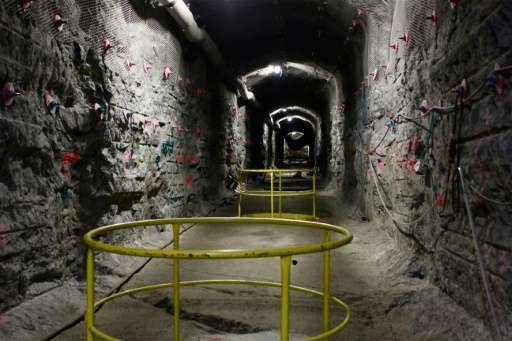While many countries are unsure what to do with spent nuclear waste, Finland is moving ahead with what they believe to be a worthwhile solution.
At just shy of 1,400 feet below the Olkiluoto nuclear power plant, located on the tiny western island of Eurajoki, the Finnish government is constructing the world’s first underground repository for highly radioactive nuclear waste.
Starting in 2020, the country will begin storing away some 5,500 tons of nuclear waste here.

The area, referred to as “Onkalo” (Finnish for “The Hollow”), is expected to be the world’s costliest and longest-lasting burial ground. Early estimates have the series of underground tunnels costing Finland nearly $4 billion until the 2120s, at which point storage will be completed, and the vaults sealed for good.
“This has required all sorts of new know-how,” said Ismo Aaltonen, chief geologist at nuclear waste manager Posiva, which got approval to build the site last year.
Speaking to the status of the future tomb today, there is a single, twisting three-mile tunnel with three shafts for staff and ventilation. It features cool temperatures and the bedrock is very dry, an important consideration if the used nuclear rods are to be protected from the corrosive effects of water.
Upon its completed construction, the facility will stretch 26 miles.

When the waste is stored away, it is expected to maintain some level of radioactivity for a few hundred years; the engineers designing the site are planning for 100,000 though, just to be safe. Additionally, each nuclear rod containing capsule will be encapsulated in bentonite, a clay that will protect them from any shuddering in the surrounding rock, and also help stop water from seeping in.
Bentonite, along with blocks of clay, will also be used to fill the tunnels before they’re sealed up for good.
There are, obviously, concerns with Finland’s nuclear waste storage solution. Greenpeace, for one, has raised the issue of potential radioactive leaks.
“Nuclear waste has already been created and therefore something has to be done about it,” said the environmental group's Finnish spokesman Juha Aromaa. “But certain unsolved risk factors need to be investigated further.”
Also of concern is another ice age. While geologists cannot rule this out from happening again, the engineers designing the storage facility must ensure it can withstand any tectonic motion that might be caused by another deep chill in the upcoming time period.
Last year, a study by the University of Turku warned that should a new ice age occur, the resulting permafrost could go as deep as 200 meters below where the rods would be buried.
In response, Posiva points to Western Greenland, where land is repeatedly covered by glaciers and ice sheets. He notes that while rocks do fracture as a result of this pattern, it never goes as far down as the depth with which the waste will be buried.
Regardless, Finnish nuclear safety authority STUK has requested more modeling from the engineers on the possible long-term effects of a freeze.
Via Phys.org
Advertisement
Learn more about Electronic Products Magazine





